UI and UX in healthcare have improved user experience massively.
By enabling remote contact with patients, they have relieved numerous healthcare workers and doctors out in the field.
Driven by accelerated development and adoption in recent years and especially the covid pandemic, over 318,000 health apps are now available on top app stores worldwide, with more than 200 health apps being added each day (IQVIA).
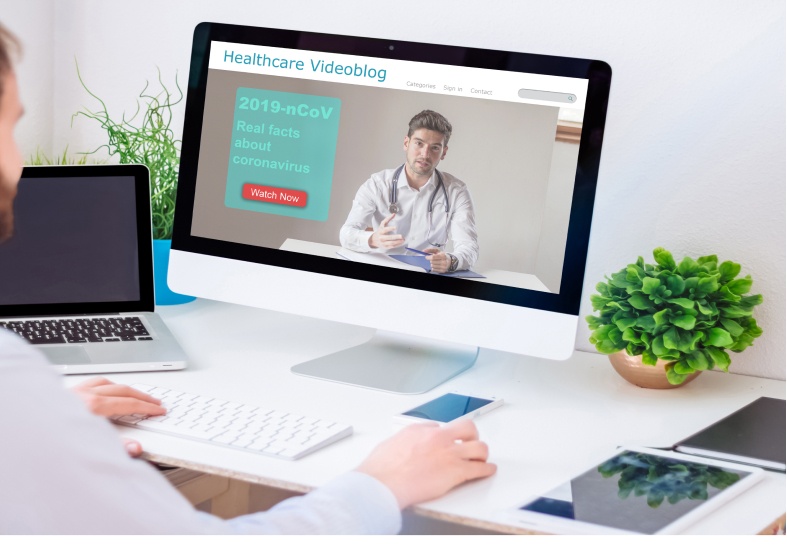
Furthermore, the global Mobile Health apps market size was valued at USD 40.05 billion in 2020 and is expected to grow at a compound annual growth rate (CAGR) of 17.7% from 2021 to 2028 (Grand View Research).
UI/UX companies are in high demand to help design apps that are user-friendly and encourage users to adopt healthy lifestyle habits.
Good design can make an app more appealing to users and encourage them to interact with it, ultimately increasing its value.
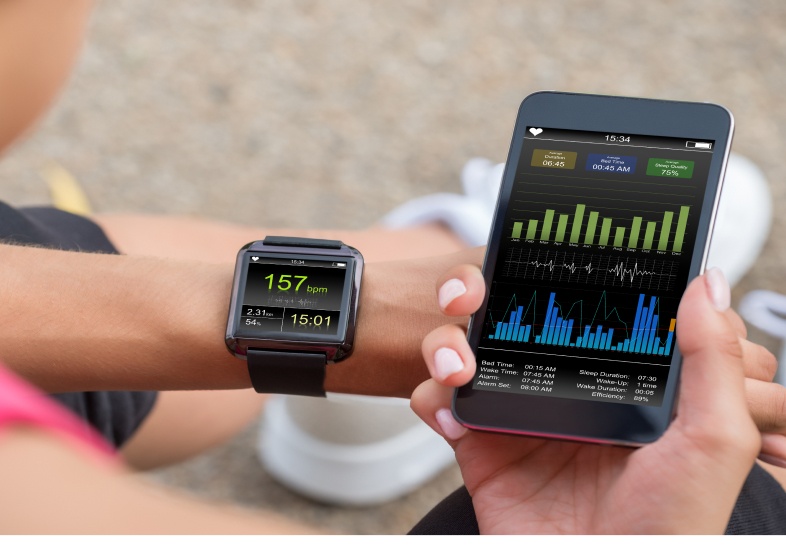
The health UI/UX market is not only limited to apps.
It also extends to wearables such as fitness trackers, sleep monitors, and other new-age devices becoming increasingly popular.
UI/UX companies have the necessary skills to help with the design of both apps and wearables and understand how to create a user-friendly experience that is visually appealing and easy to use.
Benefits Of UI/UX in Healthcare
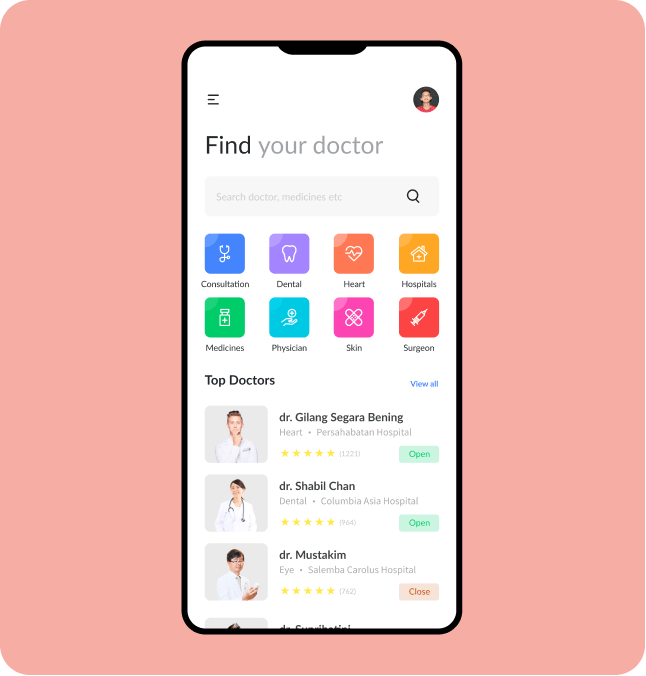
Convenience
By providing a user-friendly experience, UI/UX helps to make the healthcare experience convenient for users.
This can be seen in apps where all the necessary information is easily accessible, and users can navigate their way through the app with ease.
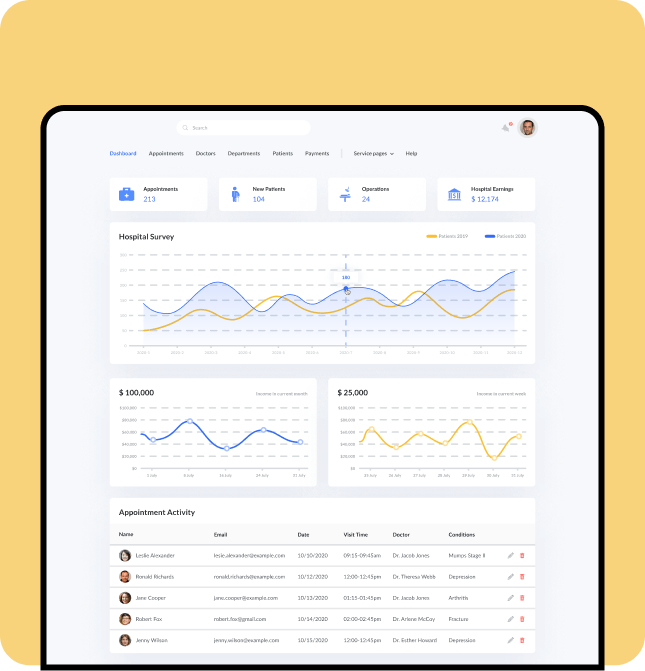
Ease
UI/UX helps make the healthcare experience easy and approachable for users by simplifying all information and visuals.
For example, instead of reading pages upon pages of text on a mobile phone screen, health apps present the same information in visual forms such as graphs or charts.
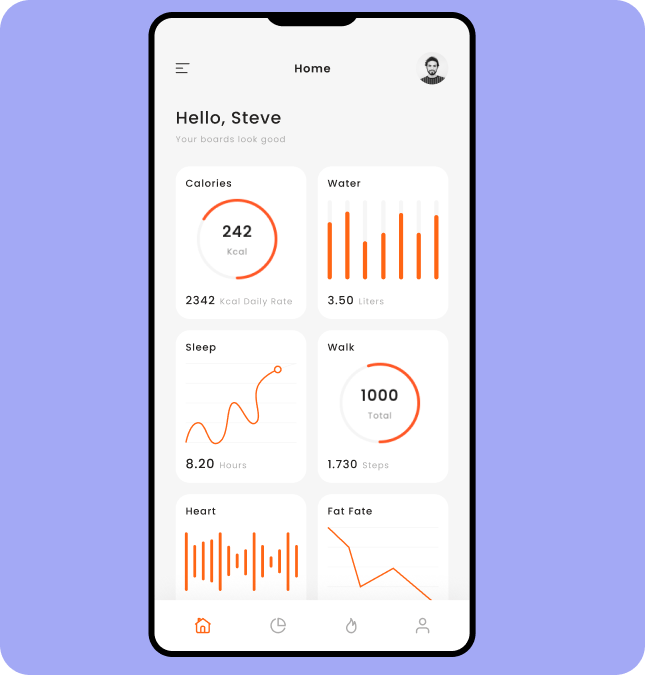
Engagement
By engaging users with interactive visuals and an easy-to-use interface, UI/UX helps to keep users engaged with the app.
This can encourage users to adopt healthy habits and stick to their healthcare routine through reminders for their medication or other healthy practices.
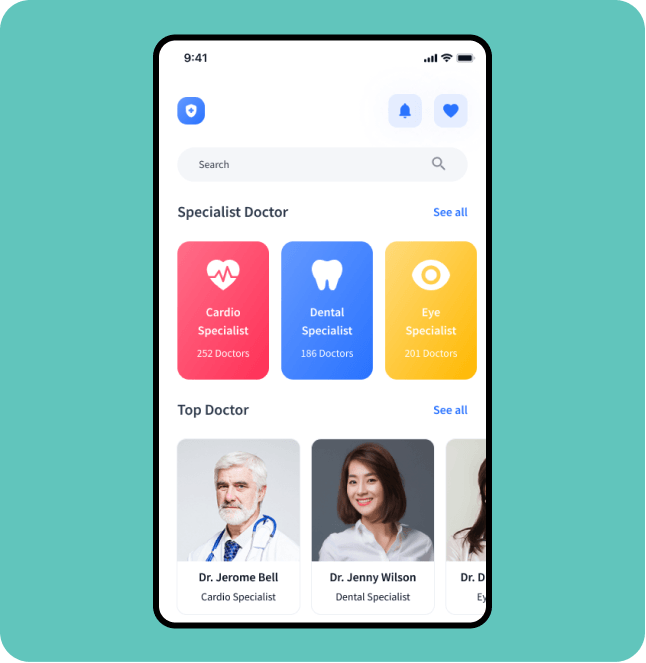
Aesthetics
A well-designed app is not only user-friendly but also visually appealing.
This is important in healthcare, where patients are more likely to experience or remember an app if it has visually appealing graphics.
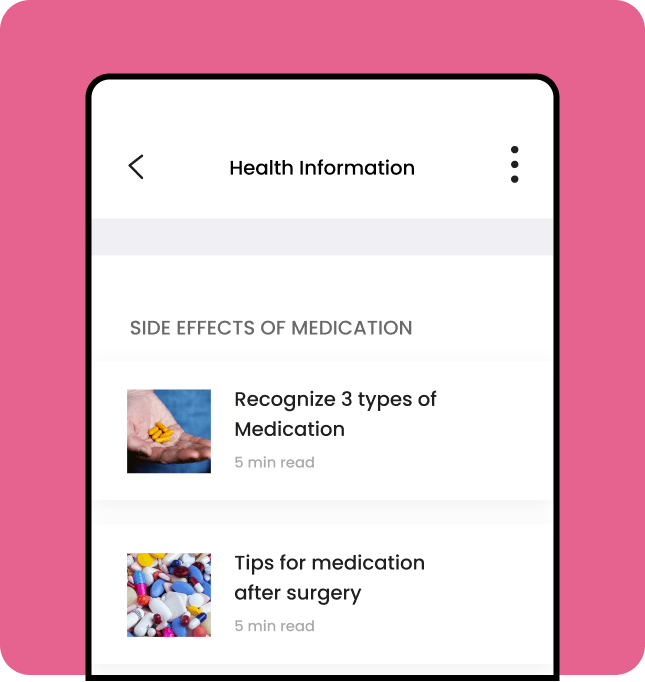
Empathy
By designing with users in mind, UI/UX companies empathize with what the user wants and can create an app that adapts to their needs.
This can be seen especially in health apps where information such as side effects of medication, dosage information, and other similar pieces of information is easily accessible.
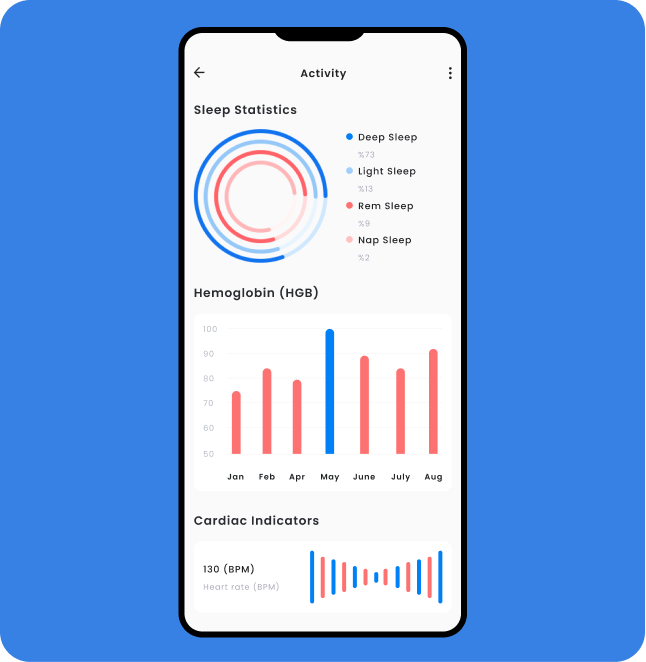
Information
Apps and wearable devices are now being developed to become far more consumer-friendly.
They have begun to integrate apps that provide quick and accurate health data by monitoring vital signs, such as heart rate and blood pressure, and detecting heart irregularities.
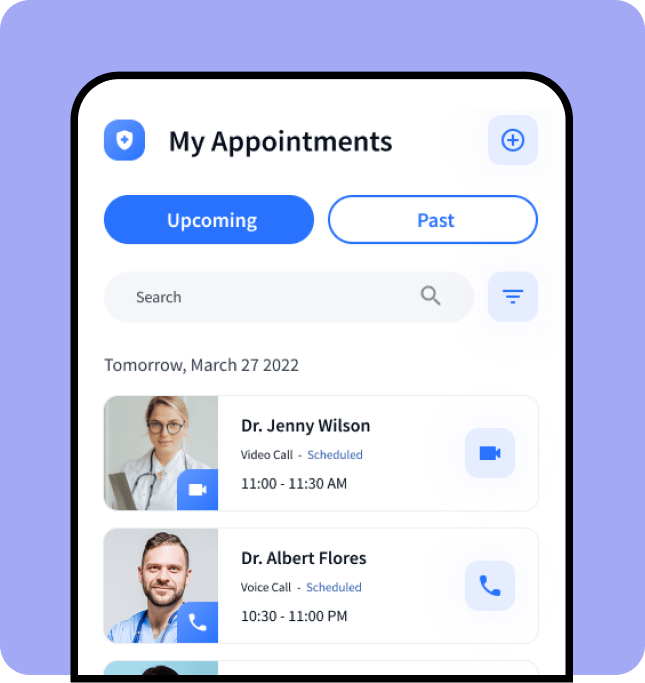
Accessibility
Booking an appointment has never been easier with apps that allow users to schedule appointments through their device or by simply speaking to an AI bot on the other end without having to spend hours waiting in line and wasting time. These chatbots are designed with the user experience in mind to optimize the consumer's interaction and satisfaction with the app.
Online consultations through video conferencing allow flexibility of the consumer's schedules in the day and provide opportunities for those who live in rural areas and would not have access to specialists otherwise.
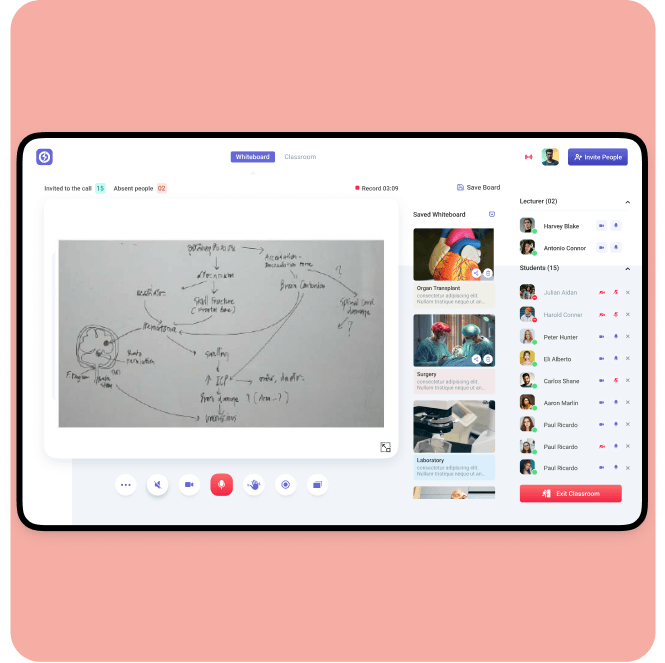
Optimized Learning
Virtual/Augmented Reality and Artificial Intelligence provide the opportunity for better learning experiences in the medical field without putting patients at risk.
For example, studies have shown that surgeons who used VR platforms for simulated training enhanced their surgical performance by 230% compared to doctors who used traditional training techniques.
How Does UI/UX in Healthcare Benefit You?

UI/UX in healthcare helps create a positive attitude towards the app and encourages users to continue using it. This can be witnessed in the app store for apps that have only a handful of 1-star ratings but multiple pages of 5-star reviews from happy users.

Having an easy-to-use interface and interactive features will help to increase user engagement and ensure that users continue using the app on a day-to-day basis.

Good UX designs in websites or apps can also increase significantly boost conversions. With direct and minimalistic app designs, customers will be more responsive to Call To Actions (CTAs) and increase the organic revenue that your business generates.

Efficient communication between consumers and brands can decrease customer churn rates, which means customers who leave the website or app once they no longer find it helpful will reduce over time. Lower churn rates will increase profits, higher customer lifetime value, and better customer satisfaction.
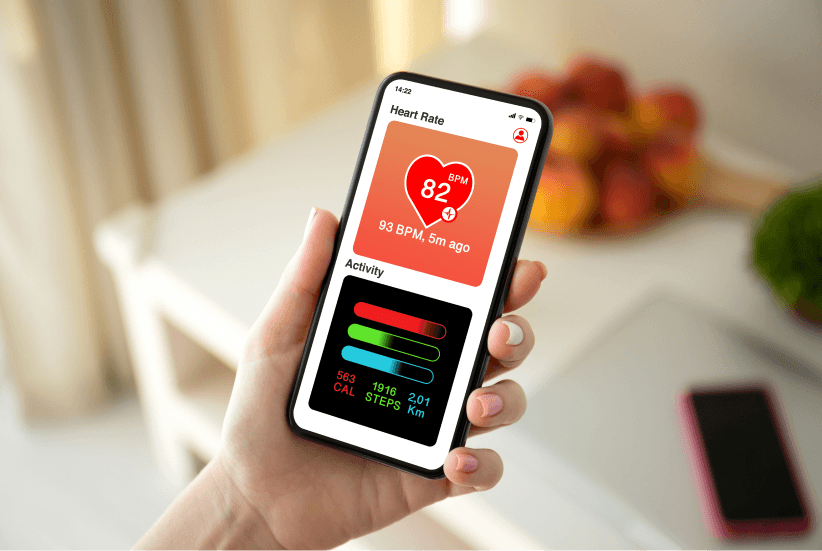
UI/UX companies may be able to decrease the number of offline resources used by creating apps and websites that sync with existing operational systems and processes. By eliminating paper trails from offices, businesses would be able to cut costs of hiring extra workers just to manage the offline systems. This also reduces the carbon footprint.

Better user experiences with your website or app will result in better SEO rankings as Google indexes and rank websites that offer a great experience to their users. In turn, this will increase traffic and improve the visibility of your website/app.

Loyal users who continuously use your services will also be more likely to purchase additional products or services from your business, boosting your bottom line. This can benefit healthcare companies as customers with repeat purchases mean increased profits and customers staying with the company for a longer period.
Our Professional UI/UX Services for Healthcare Companies
With experienced and certified professionals, our team has designed and developed user-friendly interfaces for some large healthcare brands. Our work has resulted in increased customer engagement, better brand loyalty, and higher ROI for our clients. The types of solutions that we can provide include:
Patient and Healthcare Worker Aids
Remote Patient Monitoring (RPM)
Electronic Health Records (EHR)
Medical Diagnostics Assistance
Medication Tracking Assistance
Mental Health Assistance Engines
Medical E-Learning Applications
Online Consultation Platforms
Appointment Management Software
Healthcare Organisations
Health Management Information System (HMIS)
Personal Recovery Mission Software (PRMS)
Que Management System (QMS)
Pediatric Rehabilitation System (PRS)
Rehabilitation Therapy Assistant (RTA)
Mobile Patient Journal (MPJ)
Computerized ICU
Real-Time Inventory Graph
Hardware, Software, and Data
Wearable Gadgets
Healthcare IoT Configuration and Optimization
AR and VR Applications
Information Architecture
Data Mobilization Applications
Data Presentation and Analysis
Trends in UX/UI Healthcare
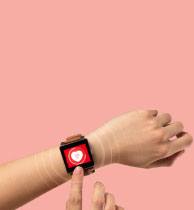
Wearable Medical Hardware
More than 80% of consumers claim they are willing to wear fitness technology. Effective and valuable, these wearables provide real-time updates on the wearer's health, sleep patterns, and other vital data.
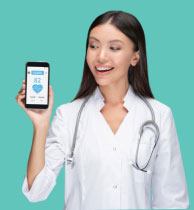
Remote Patient Monitoring
This technology communicates a patient's health information to their doctor in real-time through IoT, who can then provide necessary treatment. It is often used for those suffering from chronic illnesses, mental health issues, or post-surgery rehabilitation and, in recent years, for covid patients.
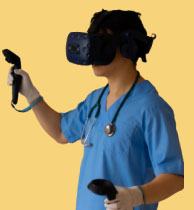
VR and AR in Healthcare
Virtual and Augmented Reality technology is often used for training healthcare professionals, but it is slowly making its way into patient care. For example, VR can help those suffering from conditions like phobias or post-traumatic stress disorder, while AR can be used to overlay medical information onto a patient's body in real-time.
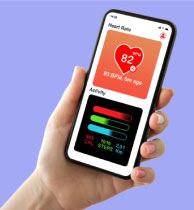
Mobile Apps
Most internet users (90.9%) use mobile devices to go online. This means that healthcare companies need to ensure that their websites and apps are mobile and customer-friendly. Apps make your services more accessible to customers and can even provide additional services such as appointment management, EHRs, and data transfer from wearable tech.
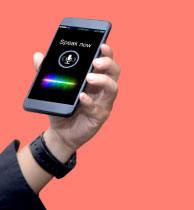
Voice User Interface
As voice-activated devices like the Amazon Echo and Google Home become more popular, healthcare companies need to consider implementing a voice user interface (VUI). This will allow customers to access their accounts, make appointments, and receive other necessary information through vocal commands..
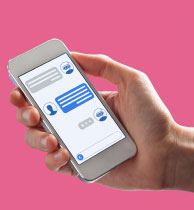
AI and Chatbots
AI can help remove or minimize time spent on routine, administrative tasks that otherwise take up to 70% of a healthcare practitioner’s time (McKinsey). For example, booking an appointment becomes very simple an app or simply speaking to an AI bot on the phone, without spending valuable time waiting in queues. Such AI communication tools are designed with the utmost user experience in mind to optimize the consumer's satisfaction with the interactions and save them time.




